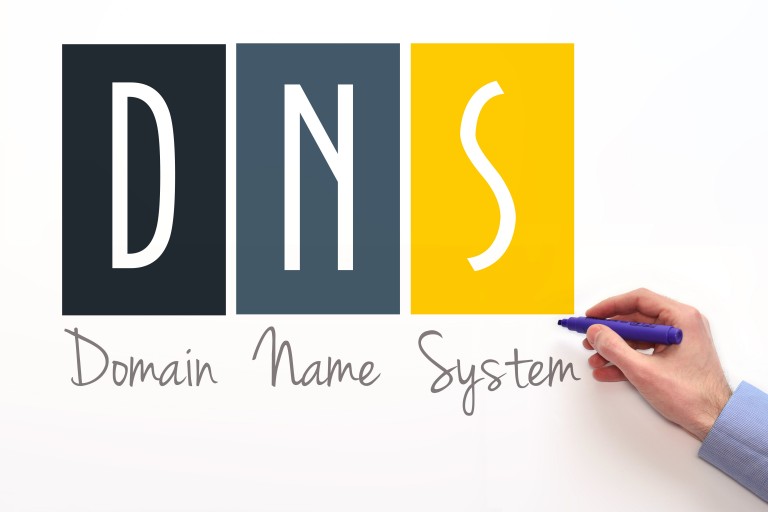
 Reading Time: 5 minutes
Reading Time: 5 minutes It’s likely that a good many of you are among the thousands upon thousands of people who have an Ad Blocker installed for your web browsers of choice. Some people do use them simply to avoid the nuisance of having to watch ad after ad, and it’s people like these that have necessitated some sites to insist that you ‘whitelist’ them in order to proceed into the website they want to visit. That’s perfectly understandable, as those paying advertisers are the way the website generates income for the individual or business. For others, however, we spend a great deal of our working day researching and referencing online, and having to watch ads before getting to the content we need in order to do our work. For us, an ad blocker is much more of a tool of necessity rather than convenience. Still, we get caught up in more than a few sites that will insist on being whitelisted too. For me, my ad blocker is a godsend and I don’t whitelist any website or disable my ad blocker for any of them. Here at 4GoodHosting, part of what makes us a good Canadian web hosting provider is having built up an insight into what really matters to our customers. The bulk of them are people who use the Information Superhighway as a production resource rather than web ‘surfers’ for whom it’s more of an entertainment one. That’s why today’s news is some that’s sure to be very relevant for most of our customers. Weakened WebRequest APIs Some of you may not know how your ad blocker works, and that’s perfectly normal. As long as it does its job, you don’t really need to know. Chromium is Google’s newest all-powerful web browser, and just like Chrome did you can expect it to soon become nearly ubiquitous as most people’s web browser of-choice. However, Chromium developers in the last few weeks have shared that among the updates they are planning to do in Manifest V3 is one that will restrict the blocking version of the webRequest API. The alternative they’re introducing is called declrativeNetRequest API. After becoming aware of it, many ad...
You may find this interesting too.

 Reading Time: 4 minutes
Reading Time: 4 minutes No one will need to be convinced of the fact there’s a massive number of shady websites out there designed to ensnare you for any number of no-good purposes. Usually you’re rerouted to them when you take a seemingly harmless action and then often you’re unable to back <- yourself out of the site once you’ve unwilling landed on it. Nobody wants to be on these spammy or malicious pages and you’re stressing out every second longer that you’re there. The well being of web surfers who also happen to be customers or friends here at 4GoodHosting is important to us, and being proactive in sharing all our wisdom about anything and everything related to the web is a part of what makes one of the best Canadian web hosting providers. It’s that aim that has us sharing this news with you here today - that Google understands the unpleasantness that comes with this being locked into a website and has plans to make it remediable pretty quick here. The first time something like this occurs you’ll almost certainly be clicking on the back button repeatedly before realizing it’s got no function. Eventually you’ll come to realize that you’ve got no other recourse than to close the browser, and most often times you’ll quit Chrome altogether ASAP and then launch it again for fear of inheriting a virus or something of the sort from the nefarious site. How History Manipulation Works, and what Google is Doing About It You’ll be pleased to hear the Chrome browser will soon be armed with specific protection measures to prevent this happening. The way the ‘back’ button is broken here is something called ‘history manipulation’ by the Chrome team. What it involves is that the malicious site stacks dummy pages onto your browsing history, and these work to fast-forward you back to the unintended destination page you were trying to get away from. Fortunately, Chrome developers aren’t letting this slide. There are upcoming changes to Chromium’s code which will facilitate the detection of these dummy history entries and then flag sites that use them. The aim is to allow Chrome to ignore the entirety...
You may find this interesting too.

 Reading Time: 8 minutes
Reading Time: 8 minutes A discussion of cybersecurity isn’t exactly a popular topic of conversation for most people, but those same people would likely gush at length if asked about how fond of public wi-fi connections they are! That’s a reflection of our modern world it would seem; we’re all about digital connectivity, but the potential for that connectivity to go sour on us is less of a focus of our attention. That is until it actually does go sour on you, of course, at which point you’ll be wondering why more couldn’t have been done to keep your personal information secure. Here at 4GoodHosting, cybersecurity is a big priority for us the same way it should be for any of the best Canadian web hosting providers. We wouldn’t have it any other way, and we do work to keep abreast of all the developments in the world of cybersecurity, and in particular these days as it pertains to cloud computing. We recently read a very interesting article about how our preferences for the ways we (meaning the collective whole of society) use public wi-fi can highlight some of the natures and needs related to web security, and we thought it would be helpful to share it and expand on it for you with our blog this week. Public Wi-Fi and Its Perils Free, public Wi-Fi is a real blessing for us when mobile data is unavailable, or scarce as if often the case! Few people really know how to articulate exactly what the risks of using public wi-fi are and how we can protect ourselves. Let’s start with this; when you join a public hotspot without protection and begin to access the internet, the packets of data moving from your device to the router are public and thus open to interception by anyone. Yes, SSL/TLS technology exists but all that’s required for cybercriminal to snoop on your connection is some relatively simple Linux software that he or she can find online without much fuss. Let’s take a look at some of the attacks that you may be subjected to due to using a public wi-fi network on your mobile device: Data monitoring W-fi...
You may find this interesting too.

 Reading Time: 6 minutes
Reading Time: 6 minutes The vast majority of websites are hosted on either Linux or Windows OS servers, and the market share is now shifting towards Linux according to a recent report from W3tech. Consumer surveys indicated that Unix servers make up some 66% of all web servers while Windows accounts for just over 33%. For most this isn’t going to be something they’ll give any consideration to, and it’s true that websites with standard HTML pages will be served equally well with either OS. These days greater numbers of websites have been ‘revamped’ since their inception and now feature dynamic design elements that enhance the UX experience for viewers. If you are planning to design or redesign your website to be much more engaging, you should work with forms and execute web applications both systems will serve your needs. Linux and Windows are pretty much neck and neck when it comes to functionality. Each works with a number of frameworks and front end programming languages, and have impressive features when it comes to hosting. Linux and Windows handle data in the same way too, and both sport easy, convenient and fast FTP tools to serve a wide range of file management functions. Nine times out of 10 you’ll be at your best with either, and at 4GoodHosting our Linux and Windows web hosting specs make us one of the best Canadian web hosting providers with data centers in both Eastern and Western Canada. Our standard web hosting is via ultra-fast, dual-parallel processing Hexa Core Xeon Linux-based web servers with the latest server software installations, and our Windows hosting includes full support for the entire spectrum of frameworks and languages: ASP.NET, Frontpage, Choice of MySQL, MSSQL 2000 or 2005 DB, ATLAS, Silverlight, ASP 3.0, PHP4 & PHP5, and Plesk. Let’s have a look at the difference with each. Price The most significant difference between Linux and Windows web hosting is the core operating system on which the server(s) and user interface run. Linux uses some form of the Linux kernel, and these are usually free. There are some paid distributions, Red Hat being a good one, which comes with a number of special features...
You may find this interesting too.

 Reading Time: 3 minutes
Reading Time: 3 minutes Security in the digital business world is really a challenge these days, and the world wide web is becoming as full of nefarious characters at the town of Machine, the ‘End of the Line’ as it were in the cool monochrome Western Dead Man with Johnny Depp from the ‘90s. A few months back we had detailed the big bad Spectre virus that had come onto the scene and posed major threats as regarded the insecurity of data for any type of website handling sensitive personal information. It continues to be a ‘thing’, and in response to it Google recently enabled a new security feature in Chrome that secures users from malicious attacks like Spectre. It’s called Site Isolation, and is a new feature available with Chrome 67 on Windows, Mac, Linux, and Chrome OS. Here at 4GoodHosting, we’re a Canadian web hosting provider that puts an emphasis on this for obvious reasons, always seeking to be as on top of our clients’ web hosting needs as effectively as possible. Google’s experimentation with Site Isolation has been going on since Chrome 63, and they’ve patched a lot of issues before enabling it by default for all Chrome users on desktop. Chrome’s multi-process architecture allows different tabs to employ different renderer processes. Site Isolation functions by limiting each renderer process to documents from a single site. Chrome then relies on the operating system, and mitigates attacks between processes and any site. Google has stated that in Chrome 67, Site Isolation has been enabled for 99% of users on Windows, Mac, Linux, and Chrome OS, according to a recent post on their company blog, stating further that ‘even if a Spectre attack were to occur in a malicious web page, data from other websites would generally not be loaded into the same process, and so there would be much less data available to the attacker. This significantly reduces the threat posed by Spectre.’ Additional known issues in Chrome for Android have been identified and are being worked on. Site Isolation for Chrome for Android should be ready with Chrome 68. Need for Speed Quick mention as well to Speed Update for Google...
You may find this interesting too.

 Reading Time: 7 minutes
Reading Time: 7 minutes In a follow up to last week’s blog post where we talked about how experts expect an increase in DDoS attacks this year, it makes sense for us to this week provide some tips on the best way to secure a server. Here at 4GoodHosting, in addition to being a good Canadian web hosting provider we also try to take an interest in the well being of clients of ours who are in business online. Obviously, the premise of any external threat taking them offline for an extended period of time will endanger the livelihood of their business, and as such we hope these discussions will prove valuable. Every day we’re presented with new reports of hacks and data breaches causing very unwelcome disruptions for businesses and users alike. Web servers tend to be vulnerable to security threats and need to be protected from intrusions, hacking attempts, viruses and other malicious attacks, but there’s no replacing a secure server with its role for a business that operates online and engages in network transactions. They tend to be the target because they are many times all too penetrable for hackers, and add to that the fact they’re known to contain valuable information. As a result, taking proper measures to ensure you have a secure server is as vital as securing the website, web application, and of course the network around it. Your first decisions to evaluate are the server, OS and web server you’ll choose to collectively function as server you hope will be secure, and then the kind of services that run on it. No matter which particular web server software and operating system you choose to run, you must take certain measures to increase your server security. For starters, everyone will need to review and configure every aspect of your server in order to secure it. It’s best to maintain a multi-faceted approach that offers in-depth security because each security measure implemented stacks an additional layer of defence. The following is a list we’ve assembled from many different discussion with web development and security experts that individually and collectively will help strengthen your web server security and guard against...
You may find this interesting too.

 Reading Time: 5 minutes
Reading Time: 5 minutes The long and short of it is that Internet security will always be a forefront topic in this industry. That’s a reflection of both the never-ending importance of keeping data secure given the predominance of e-commerce in the world today and the fact that cyber hackers will never slow in their efforts to get ‘in’ and do harm in the interest of making ill-gotten financial gains for themselves. So with the understanding that the issue of security / attacks / preventative measures is never going to be moving to the back burner, let’s move forward to discuss what the consensus among web security experts is – namely, that DDoS Attacks are likely to occur at an even higher rate than previously for the remainder of 2017. Here at 4GoodHosting, in addition to being one of the best web hosting providers in Canada we’re very active in keeping on top of trends in the Web-based business and design worlds. as they tend to have great relevance to our customers. As such, we think this particularly piece of news is worthy of some discussion. Let’s have at it – why can we expect to see more DDoS attacks this year? Data ‘Nappers and Ransom Demands As stated, IT security professionals predict that DDoS attacks will be more numerous and more pronounced in the year ahead, and many have started preparing for attacks that could cause outages worldwide in worst-case scenarios. One such scenario could be – brace yourselves – a worldwide Internet outage. Before you become overly concerned, however, it would seem that the vast majority of security teams are already taking steps to stay ahead of these threats, with ‘business continuity’ measures increasingly in place to allow continued operation should any worst-case scenario come to fruition. Further, these same insiders say that the next DDoS attack will be financially motivated. While there are continued discussions about attackers taking aim at nation states, security professionals conversely believe that criminal extortionists are the most likely group to successfully undertake a large-scale DDoS attack against one or more specific organizations. As an example of this, look no further than the recent developments regarding Apple...
You may find this interesting too.

 Reading Time: 5 minutes
Reading Time: 5 minutes If you yourself haven’t been the victim of a cyber attack, you very likely know someone else who has, and in fact the numbers suggest that upwards of 90% of organizations experienced at least SOME level of an IT security breach in the past year. Further, it’s believed that one in 6 organizations have had significant security breaches during the same period. Here at 4GoodHosting, we’ve established ourselves as a top Canadian web hosting provider but we’re always keen to explore industry trends - positive and negative - that impact what matters to our customers. And our array of customers covers pretty much any type of interest one could have in operating on the World Wide Web. Cyberattacks have pretty much become a part of every day life. While not to suggest that these types of incidents are ‘inevitable’, there is only so much any one individual or IT team can do to guard against them. Yes, there are standard PROACTIVE web security protocols to follow, but we will not look at those here given the fact that they are quite commonly understood amongst those of you who have that as part of your job detail and responsibility within the organization. Rather, let’s take a look at being REACTIVE in response to a cyber attack here, and in particular with tips on how to disinfect a data centre and beef it up against further transgressions. Anti-Virus and Firewalls - Insufficient It would seem that the overwhelming trend with cloud data security revolves around the utilization of firewalls, believing them to be a sufficiently effective perimeter. Oftentimes, however, exceptions are made to allow cloud applications to run and in thus doing so the door is opened for intrusions to occur. So much for firewalls securing the enterprise. Similarly, anti-virus software can no longer keep pace with the immense volume of daily viruses and their variants that are being created in cyberspace nearly everyday. A reputable cybersecurity firm recently announced the discovery of a new Permanent Denial-of-Service (PDos) botnet named BrickerBot, which serves to render the victim’s hardware entirely useless. A PDoS attack - or ‘phlashing’ as it’s also referred to -...
You may find this interesting too.

 Reading Time: 4 minutes
Reading Time: 4 minutes DNS isn’t exactly a buzzword in discussions among web hosting providers or those in the web hosting industry, but it’s darn close to it. DNS is an acronym for Domain Name Servers and what DNS does is see to it that after entering a website URL into your browser you then end up in the right spot - among the millions upon millions of them - on the World Wide Web. When you enter this URL, your browser starts trying to figure out where that website is by pinging a series of servers. These could be resolving name servers, authoritative name servers, or domain registrars, among others. But those servers themselves - often located all around the world - are only fulfilling an individual part in the overall process. The process itself is a verification of identities by means of converting URLs into identifiable IP addresses, which the networks communicate with each other and by which your browser confirms that it’s taking you down the right path. In a world with literally billions of paths, that’s a more impressive feat than you might think, especially when you consider it’s done in mere seconds and with impressive consistency. It’s quite common to hear of DNS in conjunction with DDoS, with is another strange acronym that is paired with the term ‘attack’ to create a phenomena noun. What DDoS is and how it’s related so explicitly to DNS much of the time is as follows: A DDoS attack is a common hack in which multiple compromised computers are used to attack a single system by overloading it with server requests. In a DDoS attack, hackers will use often use infected computers to create a flood of traffic originating from many different sources, potentially thousands or even hundreds of thousands. By using all of the infected computers, a hacker can effectively circumvent any blocks that might be put on a single IP address. It also makes it harder to identify a legitimate request compared to one coming from an attacker. The DNS is compromised in the way browsers essentially can’t figure out where to go to find the information to load on the...
You may find this interesting too.

 Reading Time: 4 minutes
Reading Time: 4 minutes DNS is an acronym that stands for “domain name system”. Without domain names, we wouldn’t have a way of getting to particular a website, such as numbers like 292.14.78.251, or worse the new ipv6 numbers that are much longer, too long in fact to provide an example here. In this article we will give an overview of how D.N.S functions. The most important thing, that our web hosting customers can learn from this, is the process of how DNS records are changed, or updated to your web host’s “name servers” address’. These are important domain names which also rely on the DNS system to be converted into your webserver’s numerical IP-address. “Name Servers” Name servers enable people to use their domain name in order to access your webserver; which then in turn directs your site visitors to your specific web hosting account and files, rather than a complex IP address. DNS also makes economical “shared hosting” possible, since the server’s IP address can be reused for dozens of different websites. Your name servers are the most important detail of your domain record, again their purpose is to redirect a visitor’s web browser to the place, that is web-server on a rack in a data-room someplace, where your site is being hosted. Modifying your domain name server(s) enables you to change your web host without having to transfer your domain to another registrar. Name servers can also be referred to as DNS servers; which can create confusion due to the two synonymous terms. DNS Records DNS refers to the layer of the internet stack, very similar to a database application, that contains the domain names, name servers, IP address’ and personal or company registration information encapsulating every public site on the Internet.DNS records contain various types of data, syntax, and commands for how a webserver should respond to lookup requests. Some of the most common syntax items defined: · “A”-record. The actual webserver IP address that is associated with the domain. · “CNAME”-record. CNAME indicates sub-domains that can be associated with your domain. · “MX”-record. This refers to specific mail servers that might be optionally used in accordance with your domain,...
You may find this interesting too.















